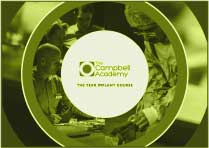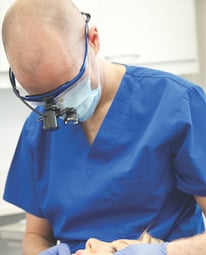Part 2 - A summary of my case
Previous posts: here, here and here. Read the case here
For obvious reasons it is essential that my case and the details are kept completely anonymous, but for the clinicians who are reading this series of blogs it is important for me to put together my view of the case as it proceeded and where the issues arose.
The patient was referred to me by a very competent and capable General Dental Practitioner in 2012 and as a result of occlusal issues and periodontal disease was losing upper anterior teeth after already losing premolars in the upper right side.
Specifically in the GDPs letter he stated, “patient does not wish to wear a denture (understandably)”
Our standard assessment process was carried out and the case was discussed between myself and a very well qualified Restorative Dentist, where all aspects were taken into consideration including the occlusal aspects and periodontal disease.
The patient underwent removal of the upper anterior teeth and hygiene treatment together with diagnostics including a CBCT scan which was reported and study models with diagnostic wax ups. Surgical guides were used to provide placement of two dental implants in the upper anterior region with a GBR procedure and two implants in the upper right with an open sinus graft simultaneously.
During the open sinus graft procedure there was a tear in the membrane which was repaired using Bio-Gide and the procedure proceeded unremarkably following that, after which the patient was discharged with a full explanation. It is important to point out here that, in my audited implant / sinus grafting cases (now over 200 with a 98% survival rate) a tear occurs in approximately 20 - 23% of cases. Sinusitis in those cases occurs in approximately 0.4% and more prolonged sinusitis has occurred in my career in one case – this case.
The patient suffered post-operative swelling which was more extensive than normal but was reassured that all was well as it was within normal ranges. When the patient returned approximately one month later, they were complaining of the symptoms of acute sinusitis and had been prescribed Amoxicillin by their General Dental Practitioner which is appropriate for sinusitis treatment in our part of England based on ENT advice.
The patient was then seen again when the sinusitis symptoms were much reduced and very intermittent and appeared to be reducing entirely in nature. At this stage I wrote to the General Dental Practitioner to explain the complication that had occurred but that I felt it was resolving and no further action was required. This is generally the case when sinusitis occurs in open sinus grafting cases and resolution is generally complete.
When the patient was seen again six weeks later they reported that they had had one other episode where the sinusitis symptoms had increased but had, of their own volition, sought General Medical Practitioner advice and was now taking Doxycycline. The patient said that the symptoms were reducing considerably again. I had a discussion with the patient at that stage where we discussed the fact that symptoms seemed to be continuing to reduce and I decided to review them through reconstruction.
The patient attended for reconstruction with a very experienced and highly qualified Restorative Dentist and all was well with no complaints of symptoms until the end of the reconstructive phase where the patient reported a return of their sinusitis symptoms. At this stage I felt it was prudent to refer the patient to the local Maxillofacial team which I did and expedited a referral including providing a free of charge CBCT scan for the patient to take to their appointment with the Maxillofacial surgeon.
As the patient lived a distance away, the Maxillofacial surgeon decided to refer to an ENT colleague closer to their home. At that stage we received no further contact from the clinicians treating the case and we left the case for a period of weeks before contacting the patient to ensure they were well. When we contacted the patient at approximately eight weeks, after having heard nothing from the further referral from the ENT surgeon, I was horrified to discover that the patient had had a sinus washout which appeared not to have been successful and had then ended up in the care of another clinician who had explained to the patient that the implants would need to be removed. At this point both myself and the patient’s GDP independently sought the advice of Consultant Maxillofacial surgeons providing full clinical information and detail including the CBCT scans from weeks before which showed that the implants were integrated and secure. The GDP had also re-torqued the crowns in position some time prior to this which demonstrated that the implants were well integrated.
The patient proceeded with the remedial treatment to remove the implants and to have an open sinus washout and I am led to believe that the symptoms have resolved as a result of this.
Following the patient asking me to provide no further contact to them, the patient then referred me to the General Dental Council with various degrees of complaints including complaining about my teaching status in lecturing to dentists, the fact that we offer to provide finance at the practice (which they did not take up and we no longer provide) and also suggested I had withheld information in relation to the tear in the sinus. As is the case in disputes which occur in clinical care (and I have significant experience of this from Medico Legal work) there appears a litany of allegations against the clinician involved, many of which are difficult to understand.
This kick-started the process with the General Dental Council on October 2013.
It is essential that we all use the opportunity to get our views across to Government. Please submit your responses to the Health Select Committee Accountability Hearing by 19th February here.
If you would like to subscribe to the blog please email marie@campbell-clinic.co.uk with ‘Blog’ as the subject.






.png)

Leave a comment